History GDV
“Electrophotosphenes and energography as a proof of existence of the physiological polar energy”. This was the name of a small book by a doctor from St. Petersburg, Messira Pogorelsky, where he described his experiments in bioelectrography. Book, published in 1893. Many photographs of the glow of fingers and toes, ears and nose show how the pattern of fluorescence varies when the psychic state of a person changes. However, this work was far from being the first one.
 In the 1770's many researchers made experiments with electricity. There was no practical benefit from this: more than 100 years still remained till the invention of the electrical bulb by Tomas Edison; life passed with candle lights, European monarchies seemed to be eternal, and science studies were mainly the lot of an aristocracy. In 1777 a German physicist George Lichtenberg touched a metal electrode covered with glass and connected to voltage with his finger while experimenting with the electrical machine. And suddenly a burst of sparkles flew all around. This was magically beautiful, although a little bit frightening. Lichtenberg jerked back the finger and then repeated the experiment. The finger placed on the electrode was shining with bright blue light and treelike sparkles dispersed from it. Lichtenberg, being a real academic scientist, investigated the behavior of this fluorescence in detail, although he substituted a grounded wire for a finger. The effect was the same, which later suggested an idea that some special energy exists in the body, and first electrical then torsion properties were attributed to it. Articles by Lichtenberg, masterfully done in German, are still cited in books on gas discharge. Further research demonstrated that electrical fluorescence was not so rarely met in nature…
In the 1770's many researchers made experiments with electricity. There was no practical benefit from this: more than 100 years still remained till the invention of the electrical bulb by Tomas Edison; life passed with candle lights, European monarchies seemed to be eternal, and science studies were mainly the lot of an aristocracy. In 1777 a German physicist George Lichtenberg touched a metal electrode covered with glass and connected to voltage with his finger while experimenting with the electrical machine. And suddenly a burst of sparkles flew all around. This was magically beautiful, although a little bit frightening. Lichtenberg jerked back the finger and then repeated the experiment. The finger placed on the electrode was shining with bright blue light and treelike sparkles dispersed from it. Lichtenberg, being a real academic scientist, investigated the behavior of this fluorescence in detail, although he substituted a grounded wire for a finger. The effect was the same, which later suggested an idea that some special energy exists in the body, and first electrical then torsion properties were attributed to it. Articles by Lichtenberg, masterfully done in German, are still cited in books on gas discharge. Further research demonstrated that electrical fluorescence was not so rarely met in nature…
In the Nineteenth century enigmas of electricity were opening to people. One of the great inventors was Nicola Tesla, from whom we now have lamps and television sets. He invented the generator of alternating current. However, if it had not been him, somebody else would have done it. Inventions come to life when a social need for them appears. Then different people simultaneously and independently start arriving at the same ideas. This is connected with the fact that the ideas have their logic of development, and the developers shall only intuitively feel this logic. After raising good money with his patents, Nicola Tesla began the mysterious experiments on energy transfer without wires. He did not finish his developments and died in destitution, but up to now enthusiasts have been trying to investigate his ideas. We get used to our technical progress and reap its fruits with pleasure, but is it the only possible way of development? At the peak of his career Tesla liked to give public lectures and impress the audience with the following experience. The light was turned off in the room, Tesla turned on the generator of his own design, stood on the platform-electrode, and his body got wrapped in the glow. The hair stood on end, glowing rays of light radiated in the space. The experiment was very effective, though not all those who wished managed to repeat it: as a matter of fact, their glow was much less and for some people even missing. Not in vain was it said that Nicola Tesla had special energy state.
 Further research did not go much beyond investigations of the glow of fingers, sometimes ears, nose and other prominent parts of the body. Is it possible to reproduce Tesla's experiments and make all the body glow? Yes, it is. But is it necessary? Powerful equipment, which is not safe if not handled properly, is required for such an experiment. Moreover, the stronger electrical glow, the more ozone is generated in the air. A high concentration of ozone is far from being healthy.
Further research did not go much beyond investigations of the glow of fingers, sometimes ears, nose and other prominent parts of the body. Is it possible to reproduce Tesla's experiments and make all the body glow? Yes, it is. But is it necessary? Powerful equipment, which is not safe if not handled properly, is required for such an experiment. Moreover, the stronger electrical glow, the more ozone is generated in the air. A high concentration of ozone is far from being healthy.
So where is the similarity in the experiments of Lichtenberg, Tesla and the lightning? In all those cases the gas discharge appears near the earth rod. High field intensity is formed near its sharp end when placed into an electrical field. Electrons, which always exist in the air or are emitted by the bodies, start speeding up in this field and, having picked up necessary speed, ionize air molecules. Those, in their turn, emit photons, mostly in the blue and ultraviolet spectral regions. Here the glow appears. What is more, from the viewpoint of physics both a nail, a tree, a human finger, and a person can be the rod. Everything depends on the scale. Generators used in Bioelectrography have very small power. It means that they can not give high current, even if you lick the electrode with your tongue. In addition, these generators make use of high-frequency voltages and short impulses, and by the laws of physiology such current can not penetrate into the organism, as it slides on the skin surface.
A significant contribution to the study of these photographs was made by a talented Byelorussian scientist Jacob Narkevich-Yodko in the end of the Nineteenth century. He was an independent landowner and spent most of his time on his estate above the river Neman. There he actively experimented with electricity, applying it in agriculture and medicine. A straight parallel with modern medicine can be drawn from the description of experiments on the stimulation of plants with electrical current, on electrotherapy, and magnetism by J. Narkevich-Yodko. But the scientific achievements of our time are not just “the new as a well-lost old”. This is a new convolution of perception. In the end of the Nineteenth century, when the principles of electricity were only emerging, when the main source of light was a kerosene lamp, the searching investigators were trying to apply electricity to the most 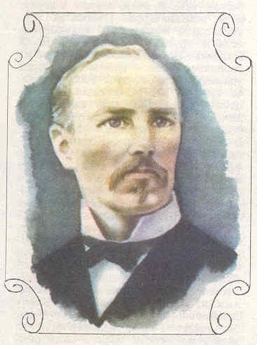 different areas of life.
different areas of life.
They were as if naming the chapters of a new book, but had not enough power to write the contents. Therefore, we find the sources of one or another modern scientific direction in the works of the enthusiasts of the Nineteenth century. J. Narkevich-Yodko developed his own original technique for making electrophotographs. He made more than 1500 photographs of fingers of different people, plant leaves, grain, and in the 1890's this research attracted attention in the scientific community. In 1892 J. Narkevich-Yodko presented for the professors of St. Petersburg Institute of Experimental Medicine, after which he was appointed a “Member-Employee of this Institute” by the order of the Institute patron, the Prince of Oldenburg. The results of Narkevich-Yodko created such an impression upon the scientific community that in 1893 a conference on electrography and electrophysiology was organized in St. Petersburg University. In the same year Narkevich-Yodko visited the scientific centers of Europe: Berlin, Vienna, Paris, Prague, Florence and gave lectures there. His experiments on electrography were acknowledged as important and envisaging further development everywhere. Narkevich Yodko received medals at several exhibitions, and at the Congress in France in 1900 he was nominated a professor of electrography and magnetism. J. Narkevich-Yodko combined scientific work with public activity. He organized a health center on his estate and received people from very different social circles: from grandees to plain people, and cured many different diseases with the help of the newest for those days, methods. But with the death of J. Narkevich-Yodko the contemporaries forgot his works. He made an interesting discovery, but could not overcome the barrier which had always been in the road of wide introduction. There had been so many interesting methods, inventions, developments, which disappeared together with their authors! In order to make an idea publicly acknowledged it is necessary to introduce it deep into the collective consciousness, attract students, followers, and companions. It is obligatory to publish articles, books, written by different authors and, advisably, in different countries. Various researchers should independently test a new idea and make sure that it is effective, but in order to do so they should have a desire! And such “overcoming of a potential barrier” usually requires more than ten years. If the author has enough persistence, energy, and optimism to get his own way, the idea starts living independently and sometimes the author gets the interest. If not, then not. And, naturally, much depends on the favor of “lady Luck”.
The general social situation in Russia played a role in the life of Narkevich-Yodko. Evil social winds were blowing, which turned into a hurricane having destroyed the leisurely way of life of the Nineteenth century and changed the beautiful estates above the Neman and Volga rivers into cold abandoned ruins. «No prophet is accepted in his own country», especially when this prophet thinks in a non-standard way and doesn’t fall into the usual pattern. But can a Prophet live a normal life?
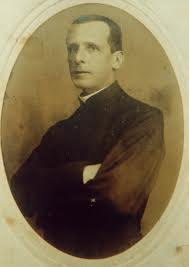 At practically the same time, on the other side of the globe in Brazil, very similar experiments were performed by a Catholic monk, padre Landell de Morua. A monk’s life left a lot of free time, after reading prayers and performing rituals. Padre de Morua invented the technique of photoregistration of electrical glow and started giving lectures and writing to social leaders in order to attract attention to his offspring. Invention of padre de Morua produced much rapt attention, congratulations, banquets, but was not widespread. Then the little priest invented the radio (practically simultaneously with Popov and Markoni), but again he was unable to draw in large crowds. Even the military.
At practically the same time, on the other side of the globe in Brazil, very similar experiments were performed by a Catholic monk, padre Landell de Morua. A monk’s life left a lot of free time, after reading prayers and performing rituals. Padre de Morua invented the technique of photoregistration of electrical glow and started giving lectures and writing to social leaders in order to attract attention to his offspring. Invention of padre de Morua produced much rapt attention, congratulations, banquets, but was not widespread. Then the little priest invented the radio (practically simultaneously with Popov and Markoni), but again he was unable to draw in large crowds. Even the military.
In the beginning of the Twentieth century nobody even recalled the mysterious glow. There were many other problems: wars, revolutions, breakthroughs in physics, discovery of antibiotics and roentgen rays – everybody was sure that it was very close to the outright victory. Only by 1930ies the life more or less came right. And here appeared the mysterious glow again. And, as if by chance, it was discovered anew, but there is a rule behind every chance.
In 1939, two Czechs S. Pratt and J. Schlemmer. published photographs showing a curious glow or aura around leaves. The same year, the Russian electrical engineer Semyon Kirlian and his wife Valentina developed their own technique after observing a patient who was receiving medical treatment from a high-frequency electrical generator. Electrotherapy was popular at the time and they had noticed that when the electrodes were brought near the patient's skin, there was a glow similar to that seen in an electrified tube filled with neon. Kirlian photography consisted of placing photographic film on top of a conducting plate, and attaching another conductor to a hand, leaf, or other part of a plant. When the conductors were energized by a high frequency high voltage power source, the resulting image showed a silhouette of the object surrounded by an aura of light.
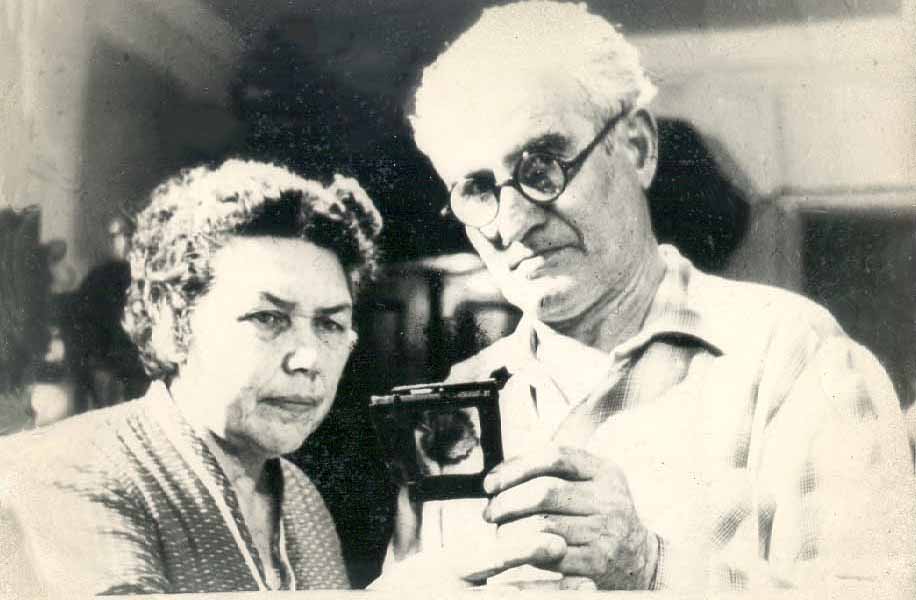
Semyon Kirlian spent most part of his life with his wife Valentina in a poor two-room apartment at the corner of Gorky and Kirov streets in Krasnodar. The wooden two-story house where they had started their family life was swept away by progress – a building program turned the small provincial town on the banks of the Kuban river into an industrial center. Kirlians were deeply carried away with the experiments with auras of live subjects, and since 1939 they had worked hard. The only rest they could afford was walking hand in hand under the trees and along blossoming fields so typical of the South Russian cities.
The Kirlians published the results of their experiments for the first time in 1958, and in 1961 reported that the characteristics of fingertip auras not only varied in different people, but was also affected by their emotional status. If someone felt very anxious or was in an opposite state of deep relaxation during meditation, there was a corresponding change in the size and intensity of the glow. Their work was virtually unknown in the West until 1970, when two Americans, Lynn Schroeder and Sheila Ostrander published their book, “Psychic Discoveries Behind the Iron Curtain”. One of the most extensive investigations was carried out at the UCLA Center for the Health Sciences, where Moss and Johnson took more than 10,000 ‘modified’ Kirlian photographs, including the fingertips of over 500 people and over 1,000 leaves. They reported that human energy fields were affected by numerous factors, such as ingesting alcohol, performing yogic exercises and during hypnosis. They confirmed that the changes were most dramatic when experiencing different emotions, and that they frequently differed when the researcher and subject were of different genders, as opposed to same sex experiments. A strict authority figure, such as a senior skilled researcher, tended to elicit a much smaller corona compared to a more informal and friendlier assistant of lower status. In studies involving four “healers”, their coronas were apt to be much larger and brighter before the healing session than during or after the intervention. In contrast, their patients’ coronas increased sharply over their baseline status, suggesting there had been an actual transfer of energy to them from the healer. Dramatic differences in the corona were also found before and after acupuncture treatment. The brightness and clarity of the corona were particularly prominent when needles were inserted at acupuncture points known to be related to the patient’s particular complaints. Based on extensive investigations, the researchers concluded that these changes could not be explained by alterations in skin resistance or temperature changes due to peripheral vascular blood flow.
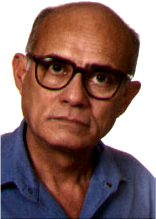
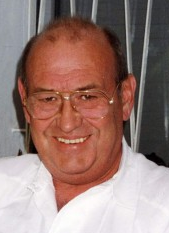 In XXth century many researchers were attracted by Kirlian photography, hundreds books and papers were published, but scientific acceptance of Kirlian photography was rather limited due to the quality of equipment used by early investigators varied considerably and results were inconsistent since there was no standardization. Things improved when a multidisciplinary group headed by William Eidson, professor of physics at Drexel University in Philadelphia, showed it was possible to image electrical parameters of a specimen in real time, thus making it possible to map human energy fields and any rapid changes. This six-year project and related research were summarized in a 1976 article in the prestigious journal Science. The International Union of Medical and Applied Bio-Electrography was formed in 1987 to help standardize equipment, research methods, and data acquisition. Researchers such as German naturopath and acupuncturist Peter Mandel and Newton Milhomens in Brazil developed their own way of interpretation of Kirlian photography of human fingers and toes. Peter Mandel was one of the first, who energized certain acupuncture points by using different colored lights to achieve a desired response. Mandel's Energy Analysis Emission diagnostic system utilized Kirlian photography and his Esogetic Colorpuncture therapy is believed to restore yin and yang equilibrium. All of these modalities, as well as non-invasive laser acupoint stimulation, have been used with varying degrees of success in thousands of patients over the years.
In XXth century many researchers were attracted by Kirlian photography, hundreds books and papers were published, but scientific acceptance of Kirlian photography was rather limited due to the quality of equipment used by early investigators varied considerably and results were inconsistent since there was no standardization. Things improved when a multidisciplinary group headed by William Eidson, professor of physics at Drexel University in Philadelphia, showed it was possible to image electrical parameters of a specimen in real time, thus making it possible to map human energy fields and any rapid changes. This six-year project and related research were summarized in a 1976 article in the prestigious journal Science. The International Union of Medical and Applied Bio-Electrography was formed in 1987 to help standardize equipment, research methods, and data acquisition. Researchers such as German naturopath and acupuncturist Peter Mandel and Newton Milhomens in Brazil developed their own way of interpretation of Kirlian photography of human fingers and toes. Peter Mandel was one of the first, who energized certain acupuncture points by using different colored lights to achieve a desired response. Mandel's Energy Analysis Emission diagnostic system utilized Kirlian photography and his Esogetic Colorpuncture therapy is believed to restore yin and yang equilibrium. All of these modalities, as well as non-invasive laser acupoint stimulation, have been used with varying degrees of success in thousands of patients over the years.
Gas Discharge Visualization (GDV) technology was developed in Russia by the team of Professor Konstantin Korotkov in 1995. 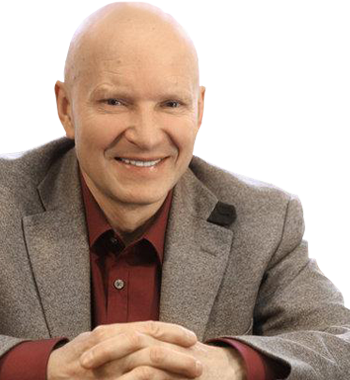 The GDV device is a state-of-the-art computerized system that has superseded traditional Kirlian photography for several reasons. A major difference is that it allows direct, real-time viewing and analysis of changes in human energy fields since the data is quantified and analyzed by sophisticated software. Because the results are obtained so rapidly, it has become an "express-method" for energy and stress analysis. Most importantly, since this technology and the protocols used are standardized, GDV results obtained by different investigators can be compared with high reliability. The results are interpreted based on the energy connections of fingers with different organs and systems via meridians that have been used in acupuncture and traditional Chinese medicine for thousands of years.
The GDV device is a state-of-the-art computerized system that has superseded traditional Kirlian photography for several reasons. A major difference is that it allows direct, real-time viewing and analysis of changes in human energy fields since the data is quantified and analyzed by sophisticated software. Because the results are obtained so rapidly, it has become an "express-method" for energy and stress analysis. Most importantly, since this technology and the protocols used are standardized, GDV results obtained by different investigators can be compared with high reliability. The results are interpreted based on the energy connections of fingers with different organs and systems via meridians that have been used in acupuncture and traditional Chinese medicine for thousands of years.
The GDV device is based on the stimulation of photon and electron emissions from an object when it is placed in an electromagnetic field and subjected to brief electrical pulses. This process is called ‘photo-electron emission’ and has been thoroughly studied with cutting edge electronic techniques. The emitted particles accelerate in the electromagnetic field, generating electronic avalanches on the surface of the dielectric (glass) plate in a process called ‘sliding gas discharge.’ The discharge causes a glow from the excitement of molecules in the surrounding gas which is constantly measured. Voltage pulses stimulate optoelectronic emissions that are amplified in the gas discharge, and light produced by this process is recorded by a sensitive CCD (charge coupled device) camera that converts it into a gret-scale computer image. Data obtained from the fingers of both hands are converted into a Human Energy Field image using proprietary sophisticated software.
This technology has extraordinary implications for all wellness related fields, including conventional as well as complementary or alternative therapies. A comprehensive review of these varied GDV applications can be found in a recent book co-authored with Dr. E. Yakovleva from Moscow Medical University. Research with the GDV device is currently being carried out at universities and research institutes worldwide in medicine, "energy medicine", athletic training, biophysics, parapsychology, and other disciplines (please, see Papers section). GDV/EPI has been used in numerous significant research projects that have confirmed its usefulness and reliability and value.